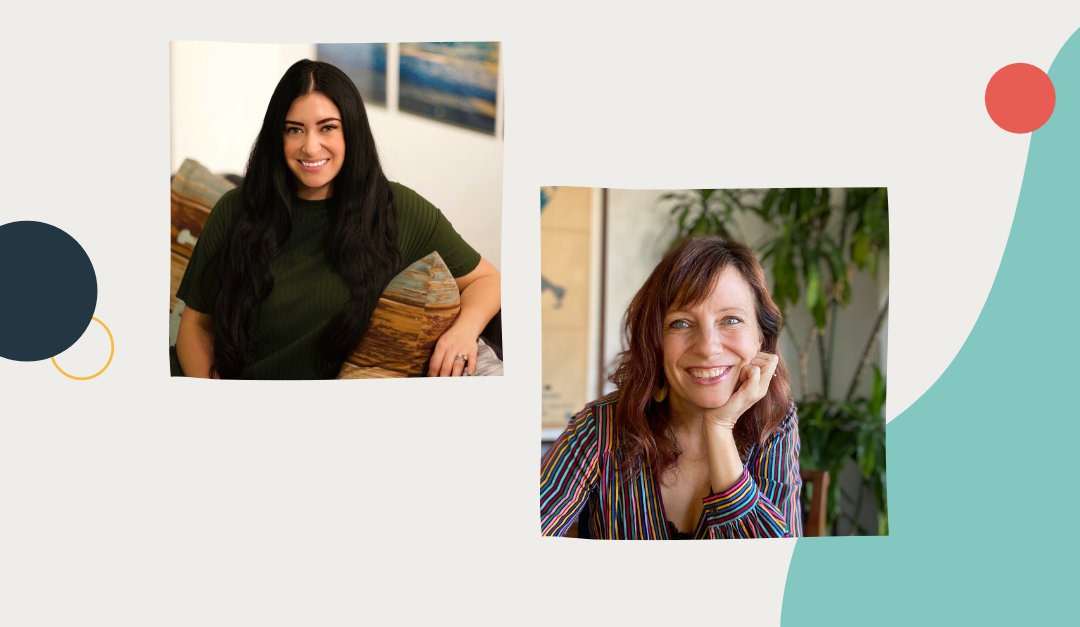
5 Ways to Get Over Freelance Impostor Syndrome
Every decision can feel like a make-or-break moment as a solopreneur. You’re wearing multiple hats, making tough calls, and constantly stepping into uncharted territory. It’s no wonder so many of us struggle with anxiety and self-doubt.
You’re probably familiar with the concept of impostor syndrome. It’s the feeling that you don’t truly belong or deserve the success you’ve achieved — that you’re actually just fooling everyone into believing you’re legit. Most people experience it at some point or another. And for some, it can be a tough hurdle to overcome. When the fear creeps in, it can stop you from taking confident steps that might grow your business, like pitching a client, promoting your work, and asking for the rate you deserve.
Fortunately, impostor syndrome is so common, there are lots of proven strategies to combat it. Below, we’ll share our top five favorites.
How to Kick Impostor Syndrome to the Curb
Focus on the Facts
Impostor syndrome thrives in ambiguity — the foggy place between perception and reality, where we can take a neutral observation (like “they haven’t replied to my email”) and turn it into a damning narrative (“they think my work is terrible and my rate is too high”). The stories you weave when you’re anxious are usually rooted in scarcity and unworthiness. Recognizing that they’re not facts, but rather distorted self-perceptions, can be a helpful way to prevent a spiral.
The truth is, unless you’re a literal con artist or part of a royal family, you didn’t stumble into your success by chance. You’ve most likely worked hard, developed valuable skills, and overcome countless challenges to get where you are today. But when we’re facing impostor syndrome, we tend to minimize and overshadow our accomplishments. The way to stop that? By focusing on your accomplishments instead. Keep an actual track record of what you’ve achieved. Save the positive feedback you receive from clients and refer back to it. Note all the ways you’ve grown your business. By focusing on the facts, we can kick the illusion that we’ve faked our way to where we are, and embrace our strengths and accomplishments.
Connect with Members of Your Community
We all need people to mirror our gifts back at us sometimes, or just remind us we’re not alone. Strong, supportive peer relationships can be incredibly grounding, especially when you typically work solo. Freelancers don’t get annual reviews or everyday affirmations from colleagues and managers. So connecting with your freelance community can be a powerful way to counteract the nagging feelings of impostor syndrome that thrive in the echo chamber of your mind. Chatting about your struggles will often remind you how common they are, which can take the power out of the impostor monster too. Plus, you gain a sense of belonging, and who doesn’t want that?
Whether it’s through networking events, freelancer associations, or online spaces, building relationships with your community is worth the effort. You’ll likely discover that many of the people you admire have moved through the same fears and insecurities at some point in their journey.
Learn How to Quiet Your Mind
There’s a reason Buddhist teachings frequently refer to the “monkey mind” — the frazzled, distracted, anxious state so many of us are accustomed to living in. It’s the source of so much of our modern suffering. But there are ample (free!) tools that can help you quiet your mind, soothe your nerves, and counteract your inner critic. Mindfulness practices like meditation, body scans, and deep breathing can help, and so can basic actions like going for a walk or listening to uplifting music.
Anxiety tends to take hold when we get stuck in the past or the future instead of being present. So learning what helps you stay in the now — and building up your toolkit of coping strategies for when you get lost — is an absolute game-changer. It will benefit you in all areas of life. Quieting your mind is not about denying your doubts or invalidating your feelings. It’s the practice of acknowledging the fear and insecurity that’s rising up within you, while refusing to let it define you.
Celebrate Your Wins
As a small business owner, it’s easy to downplay your achievements, attributing them to luck or external factors rather than your own skills and efforts. And without colleagues bearing witness to your everyday wins, it can be easy to overlook them. But regularly acknowledging and celebrating your successes is essential for solopreneurs. It not only motivates you to keep going, but it can act as a powerful confidence-booster, reinforcing a positive self-image. So treat yourself to a coffee after you send that email. Share your wins with your community. Honor your milestones, big and small. And do it on a regular basis. These celebrations become affirmations of your power. And over time, they outweigh the false belief that you’re not enough.
Accept It
Instead of resisting or denying your feelings of self-doubt, try acknowledging their existence. It can be incredibly relieving to turn around and face your fear instead of running from it. Like the monster in your closet that turned out to be a coat, impostor syndrome is built on misperceptions — but we can’t see that until we turn on the light and look. The second you pause and get present with your insecurity, you begin to take away its power. And recognizing that impostor syndrome is a common experience shared by so many helps to normalize it too.
Self-doubt is a natural part of being a solopreneur, especially when we constantly push ourselves beyond our comfort zone. But acceptance opens the door to self-compassion. And the more you practice it, the easier it’ll be to find your footing again when impostor syndrome comes knocking. The goal isn’t to make it go away forever. It’s to get more skilled at counteracting it when it does show up.
Remember, you are not alone! I don’t know a single business owner who hasn’t struggled with self-worth, doubted their abilities, or diminished their experience. Impostor syndrome is a widespread struggle that so many face. And, ironically, it’s often successful, brilliant people who deal with it the most. So, know you’re in good company. But you don’t have to stay there. You’re deserving of your success, and all the magic that comes from seeing yourself as you truly are — a talented, worthy, creative powerhouse who’s only getting stronger with time.





Recent Comments